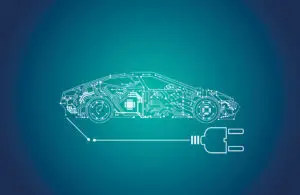 Tesla recently shared a chart presenting the average battery capacity retention per distance traveled of the Model 3 and Model Y cars with Long Range battery packs, and it’s good news for anyone keeping theirs for the long haul.
Tesla recently shared a chart presenting the average battery capacity retention per distance traveled of the Model 3 and Model Y cars with Long Range battery packs, and it’s good news for anyone keeping theirs for the long haul.
According to Tesla’s 2023 Impact Report, the average battery capacity loss of the Model 3 and Model Y Long Range versions after 200,000 miles is 15%. This also means the average capacity retention after the distance is 85%.
All EV batteries lose capacity over time and/or use (some chemistries faster than others). Multiple factors, like temperatures or charging/discharging rate, might additionally affect the longevity. Usually, the goal is to design a battery that will last for the life of the vehicle, without too high capacity fade.
The Tesla Model 3/Model Y Long Range’s battery degradation results are quite impressive, although not as high as the Model S/Model X cars, which averaged 12% capacity loss after 200,000 miles or 88% capacity retention.
Tesla wrote that its batteries are designed for over 200,000 miles of driving: “Even after 200,000 miles of usage, our batteries in Model 3 and Model Y lose just 15% of their capacity on average, while batteries in Model S and Model X lose just 12% of their capacity on average,” the company said.
Tesla also noted that, according to its estimate, a vehicle gets scrapped after approximately 200,000 miles of usage in the U.S. and roughly 150,000 miles in Europe. This means that the batteries should last long enough not to need replacing: “…we often get asked: Will I need to replace my battery at some point in the future? The answer is no. Since we’ve been selling EVs for over a decade, we have a reliable data set that shows us battery degradation over time.”
Importantly, the chart below concerns only the Tesla Model 3/Model Y with Long-Range batteries. These versions usually consist of 2170-type cylindrical battery cells (NCA or NCM chemistries) from various suppliers.
We believe the data does not include the Standard Range batteries, the LFP type or Tesla’s in-house developed and produced 4680-type cylindrical battery cells. The only Model Y equipped with these cells wasn’t marketed as “Long Range,” but simply AWD.
Tesla Model 3/Model Y Long Range versions:
- Mileage: 200,000 miles (322,000 km)
- Capacity retention: 85%
- Capacity loss: 15%
- 1% per 13,333 miles (21,453 km)
- 1% per 53 theoretical full charging cycles (assuming 250 miles per charging)
The average is just one measurement; Tesla’s chart also shows us other things. The capacity fade has the highest rate initially, but then it slows down and remains quite linear. It seems that the first 10% might be lost somewhere between 60,000 and 80,000 miles.
Another thing is the standard deviation shown on the chart above—it’s pretty close to the average. Assuming normal distribution (we don’t know the distribution curve), some 68% of the vehicle fleet should in the green area with a battery capacity of more than 80%. Some are even close to 90%. However, it also means that the remaining third (32%) might be outside, most likely under 80%.
In other words, the 85% average does not mean your vehicle will get such a result. There might be a high number of vehicles under 80% capacity.
Leave a Reply